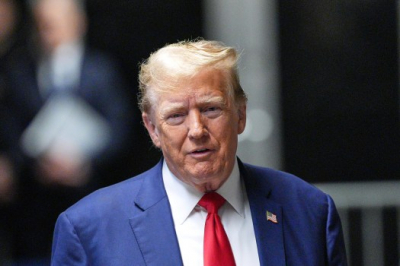An In-depth Analysis of Party Dynamics and Electoral Strategies
In a recent statement, veteran Indian politician Bhupinder Hooda succinctly encapsulated the prevailing sentiment regarding the country's political arena. His assertion, that it's essentially a duel between the Congress and the Bharatiya Janata Party (BJP), with other parties relegated to the role of 'vote-cutters,' underscores the intricate web of alliances, rivalries, and electoral tactics shaping India's democratic landscape.
As a seasoned journalist with a decade of experience covering Indian politics, I delve into Hooda's remarks to unpack the underlying dynamics and implications for the nation's political future.
Understanding the Duopoly: Congress vs. BJP
Hooda's characterization of Indian politics as a face-off between the Congress and the BJP resonates with the long-standing narrative of these two parties dominating the electoral scene. Historically rooted in contrasting ideologies—Congress as the flagbearer of secularism and pluralism, BJP espousing Hindutva and nationalism—their rivalry has defined much of post-independence Indian politics.
Over the years, both parties have evolved in response to socio-political shifts and electoral exigencies. While the Congress has grappled with internal dissent and leadership crises, the BJP has steadily expanded its footprint, leveraging Hindutva appeal and organizational prowess to secure electoral victories.
The Role of Regional Players: Beyond Vote-Cutters
Hooda's characterization of regional parties as 'vote-cutters' underscores their significance in the Indian political calculus. Often rooted in state-specific issues and identity politics, these parties wield considerable influence, particularly in coalition politics.
From the Samajwadi Party in Uttar Pradesh to the Trinamool Congress in West Bengal, regional players have emerged as formidable contenders, challenging the hegemony of national parties in their respective strongholds. Their ability to sway electoral outcomes and dictate post-poll alliances underscores their strategic importance in the larger political ecosystem.
Electoral Strategies and Coalition Dynamics
Against the backdrop of Hooda's assessment, understanding electoral strategies assumes paramount importance. For the Congress and the BJP, crafting alliances and consolidating support base emerge as primary objectives. While the Congress seeks to revive its erstwhile pan-Indian appeal through strategic alliances with regional parties, the BJP focuses on expanding its ideological footprint while forging tactical alliances to offset potential electoral challenges.
In this intricate game of political chess, coalition dynamics play a pivotal role. Regional satraps negotiate from a position of strength, leveraging their electoral clout to extract concessions and ministerial berths in post-poll scenarios. The fluidity of alliances and realignments underscores the pragmatic ethos of Indian politics, where electoral arithmetic often trumps ideological purity.
Navigating the Political Maze
Bhupinder Hooda's succinct observation offers a glimpse into the complex tapestry of Indian politics, characterized by competing narratives, strategic maneuvering, and electoral exigencies. As India hurtles towards future electoral battles, understanding the interplay between national players, regional powerhouses, and emerging political dynamics assumes paramount importance.
In this ever-evolving landscape, where alliances are forged and broken with alacrity, the adage 'politics makes strange bedfellows' rings true. As stakeholders navigate the labyrinthine maze of Indian politics, Hooda's words serve as a poignant reminder of the enduring truism: in the quest for power, there are no permanent foes, only transient allies.
Navigating the Political Maze
In conclusion, Bhupinder Hooda's astute observation regarding the dominance of the Congress and the BJP, with other parties labeled as 'vote-cutters,' sheds light on the intricate dynamics shaping Indian politics. As we dissect the implications of his words, it becomes evident that the Indian political landscape is far from monolithic; rather, it is a vibrant mosaic of competing ideologies, regional aspirations, and electoral strategies.
The duopoly of the Congress and the BJP, rooted in contrasting ideologies and historical legacies, continues to define the contours of Indian politics. Yet, the rise of regional players, often dismissed as 'vote-cutters,' underscores the decentralized nature of Indian democracy, where localized issues and identities hold sway.
As stakeholders navigate this complex terrain, electoral strategies and coalition dynamics assume paramount importance. While national parties vie for supremacy, regional satraps wield considerable influence, shaping electoral outcomes and post-poll alliances.
In this fluid and ever-evolving landscape, characterized by shifting alliances and realignments, the only constant is change. As India marches forward, grappling with socio-political transformations and economic aspirations, the words of Bhupinder Hooda serve as a poignant reminder of the nuanced interplay between power, ideology, and electoral calculus in the world's largest democracy.






